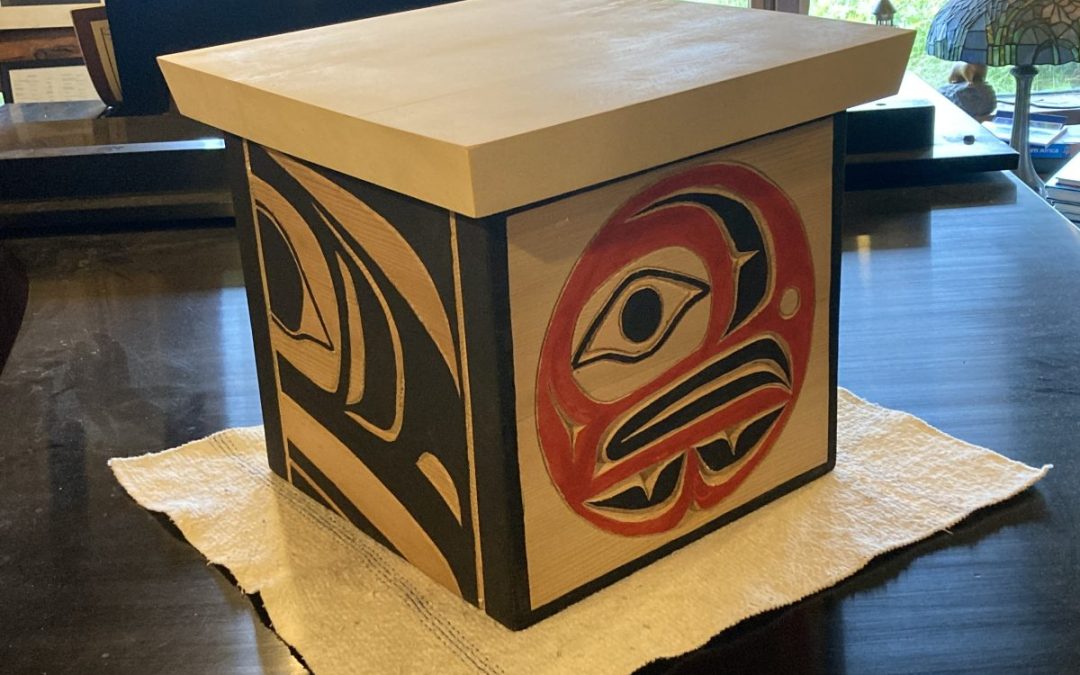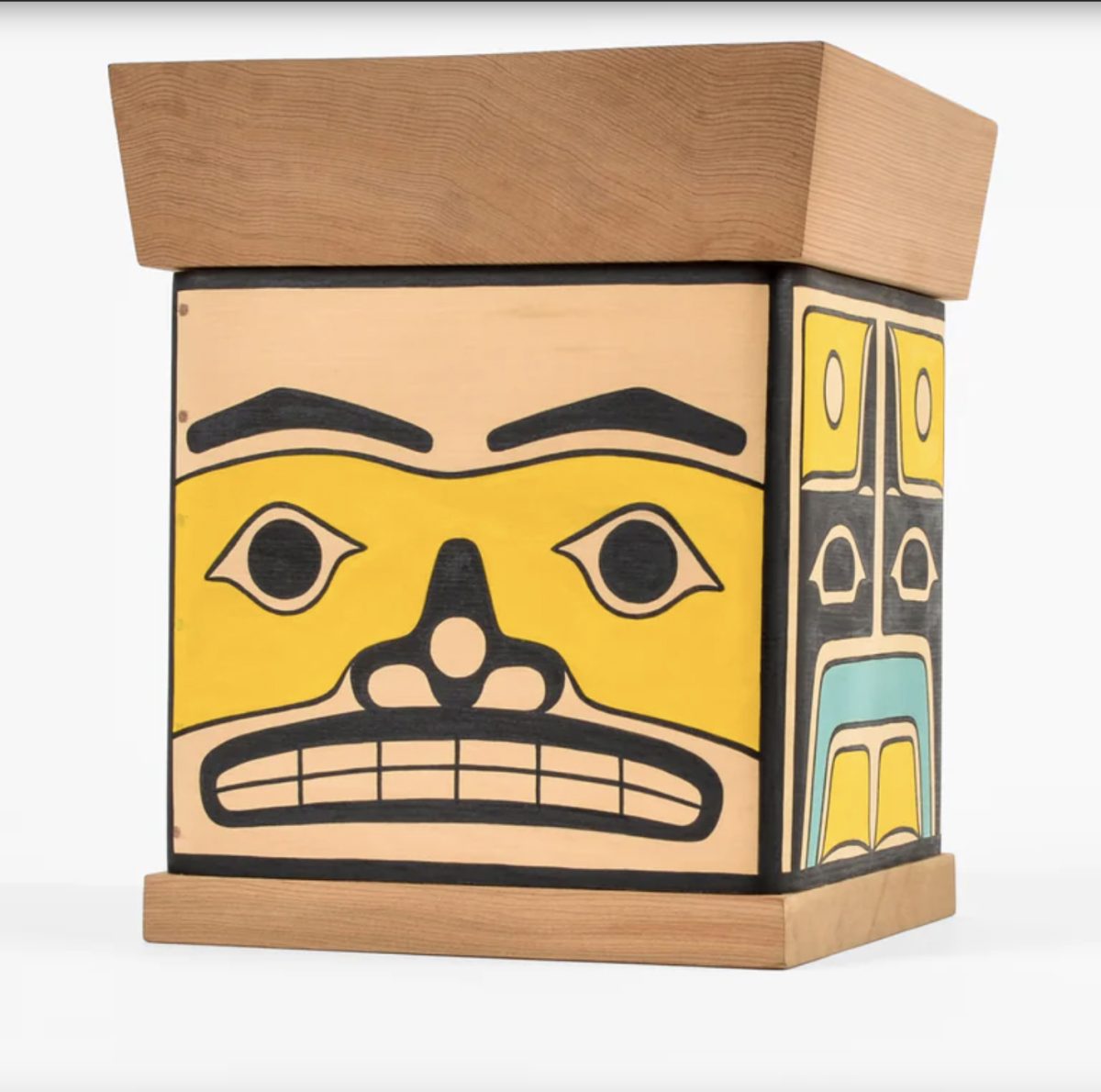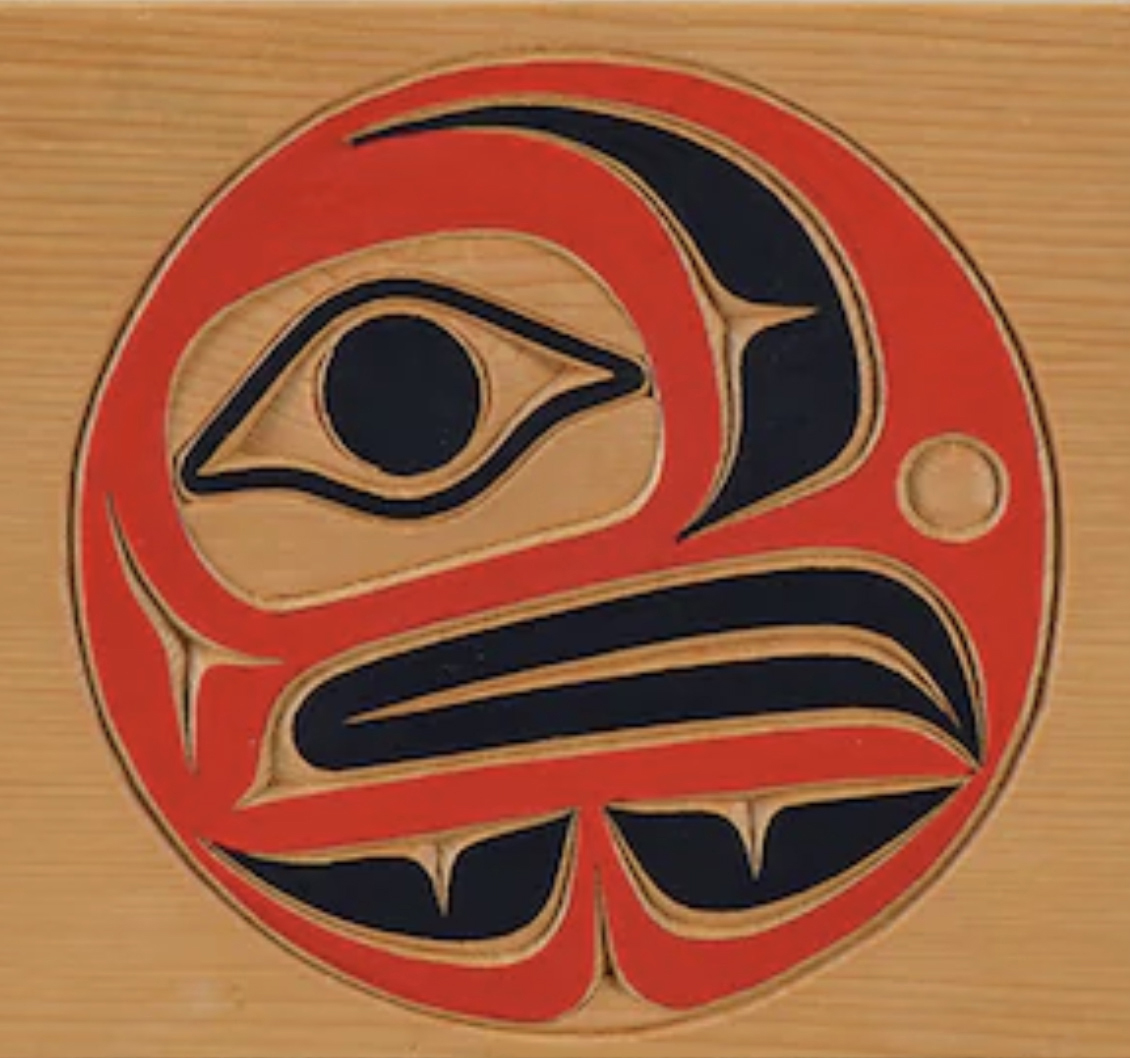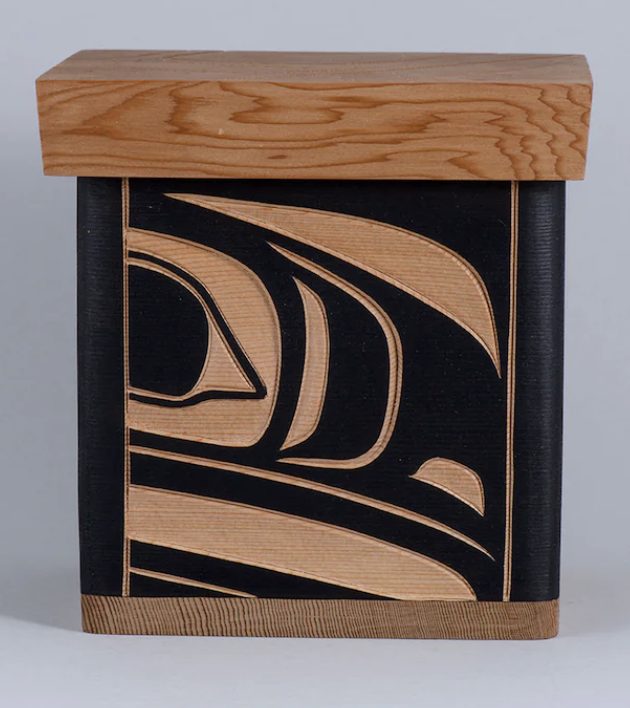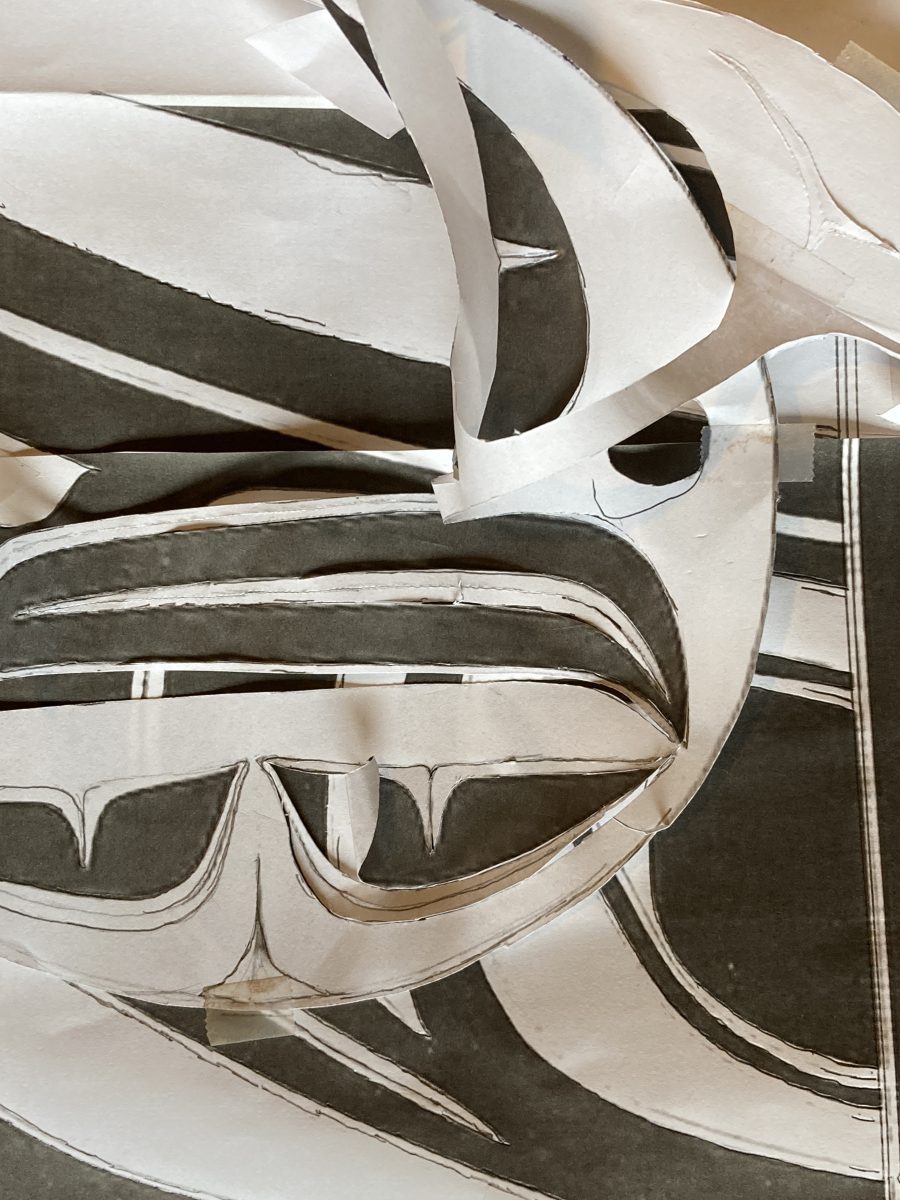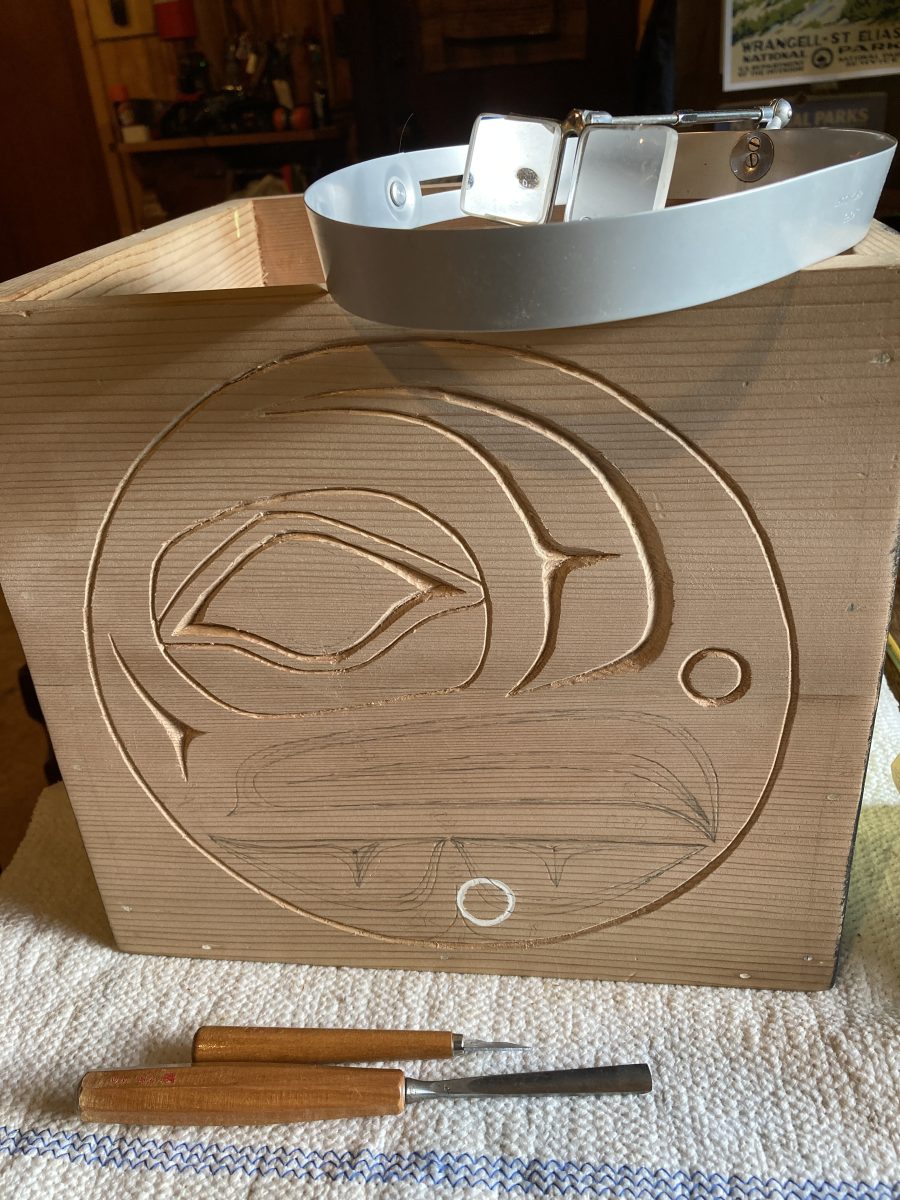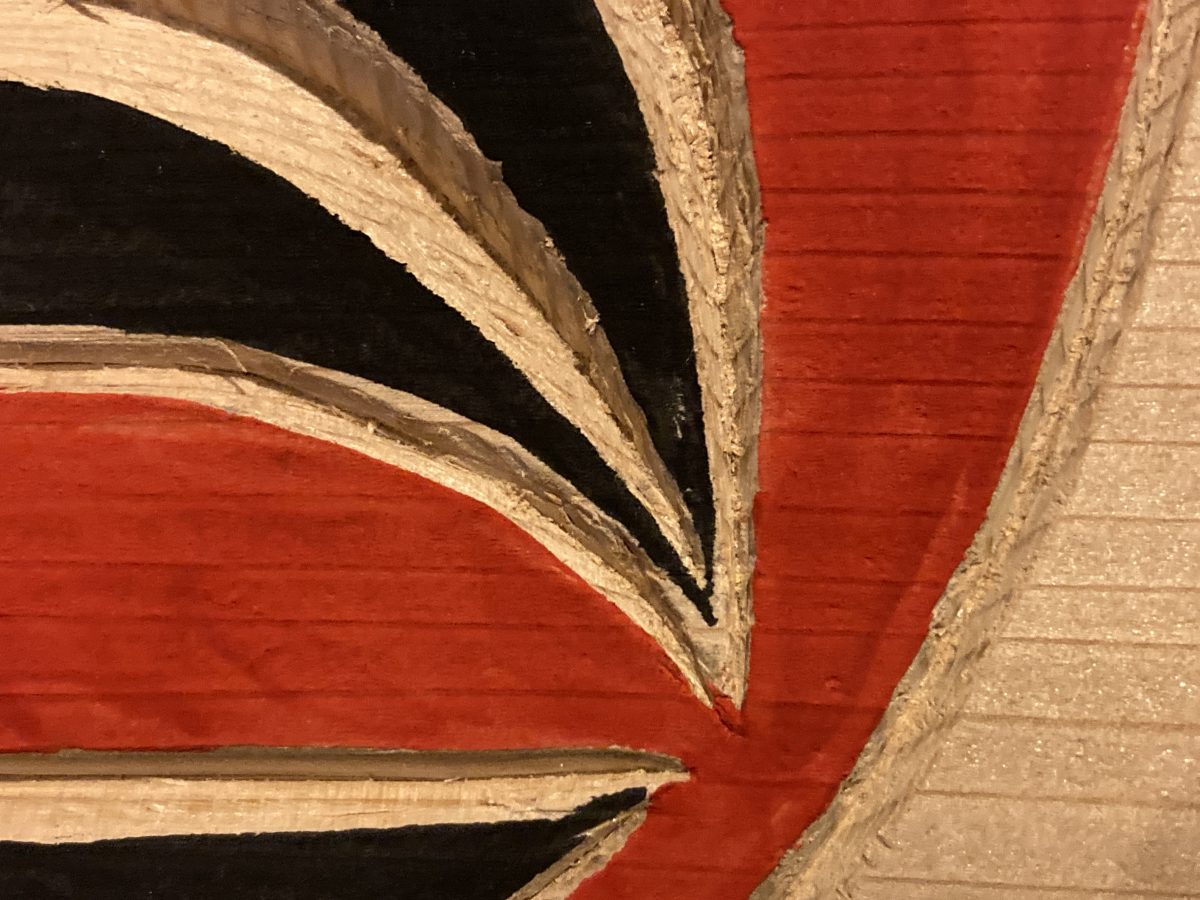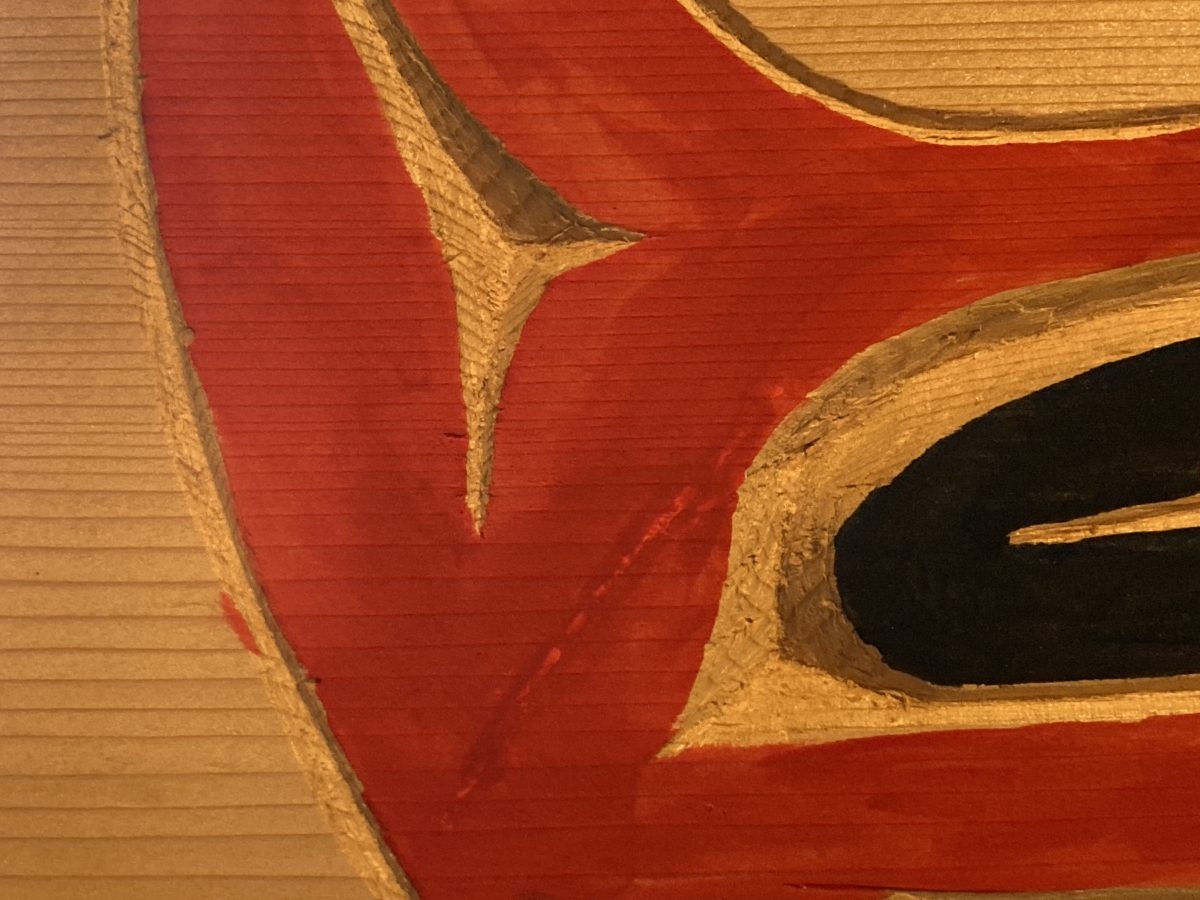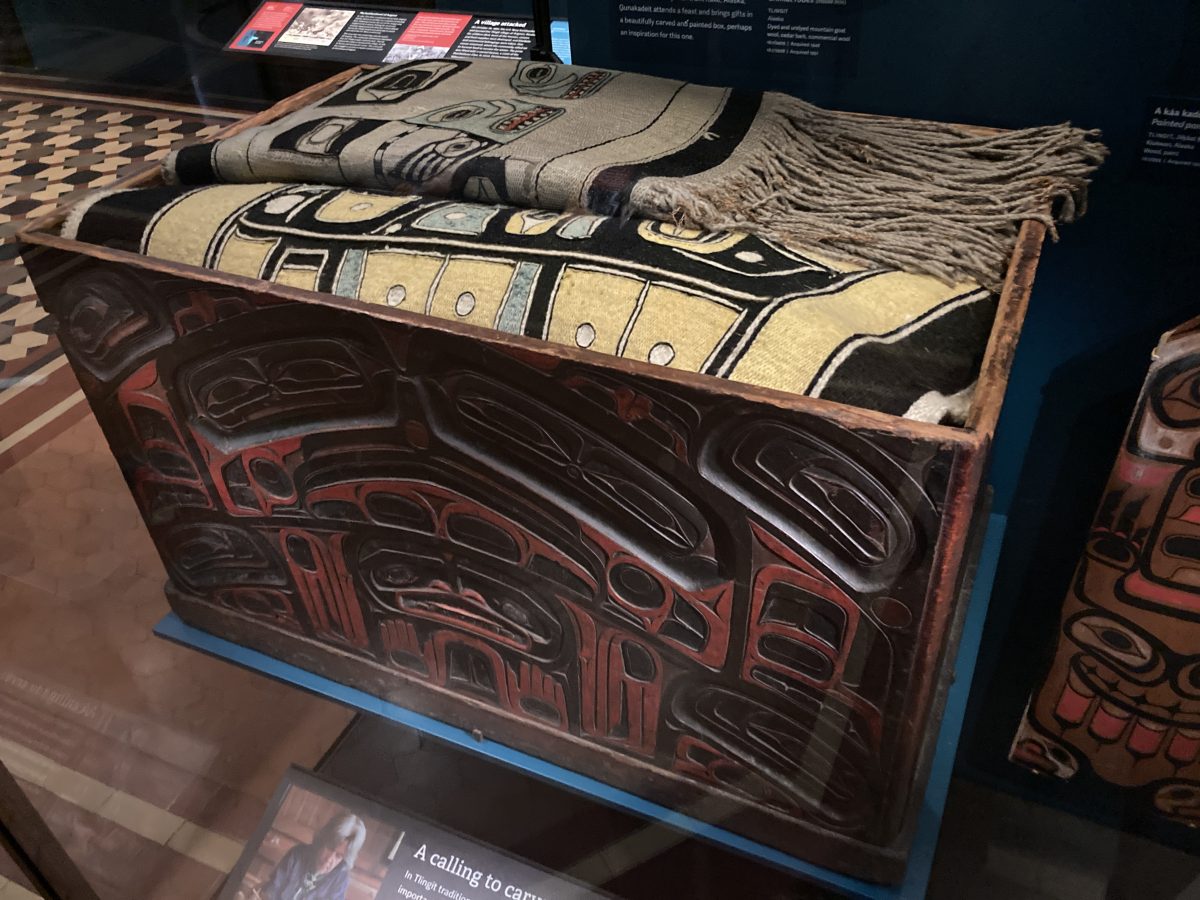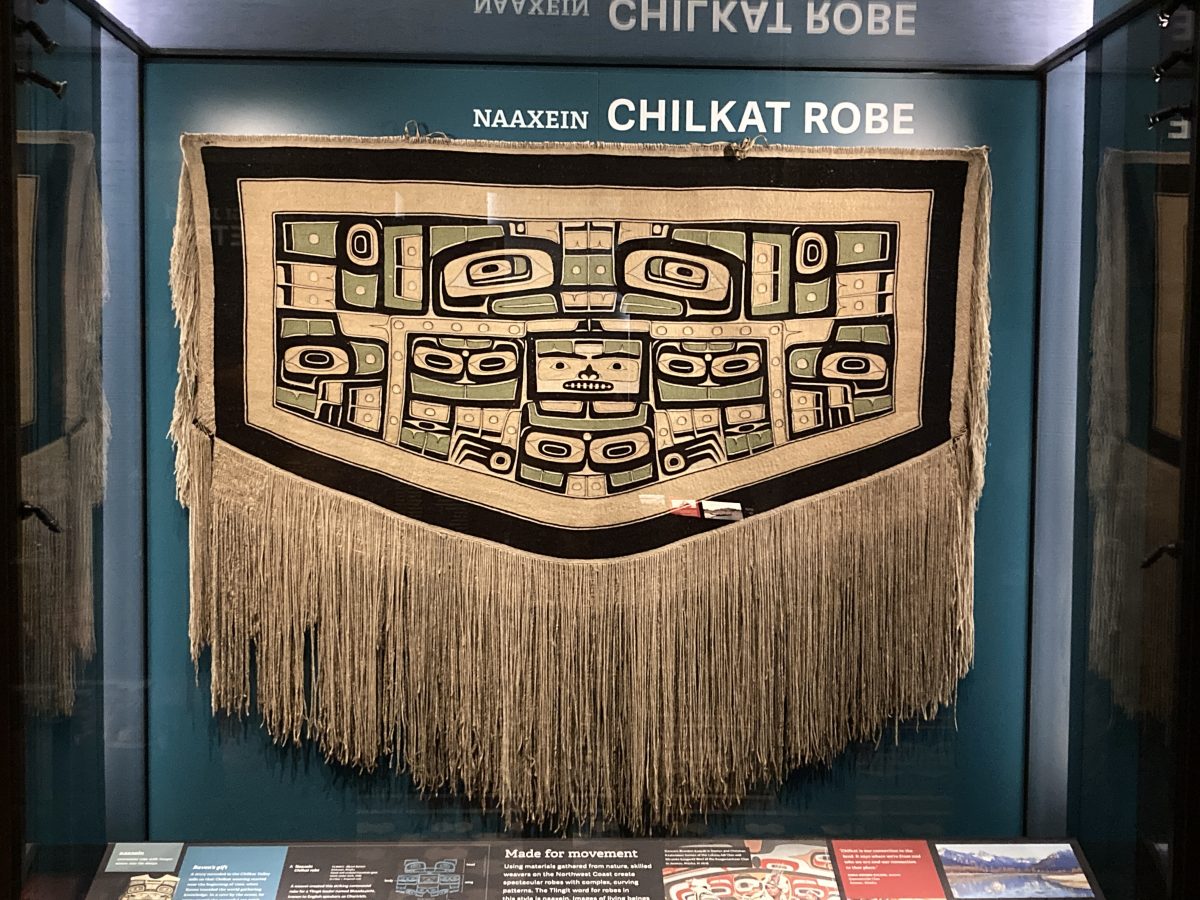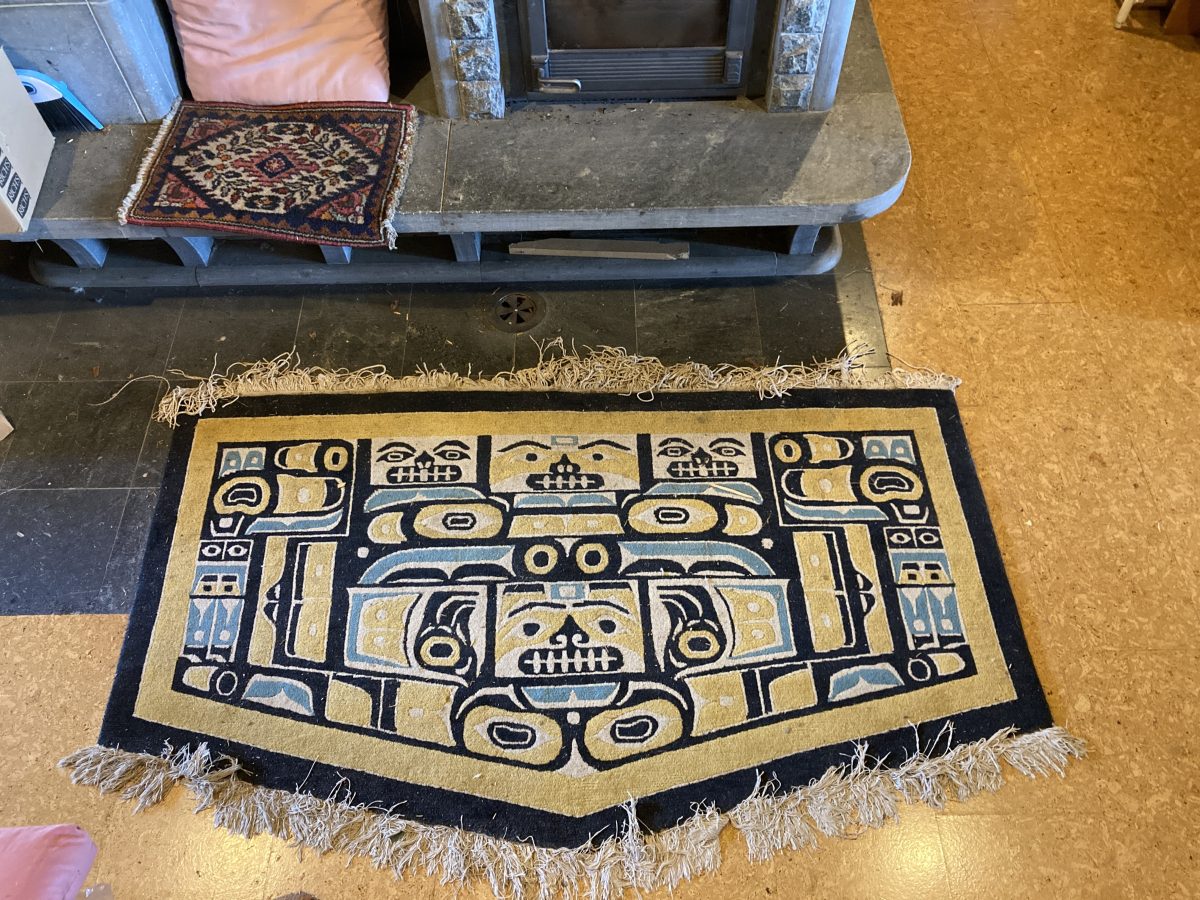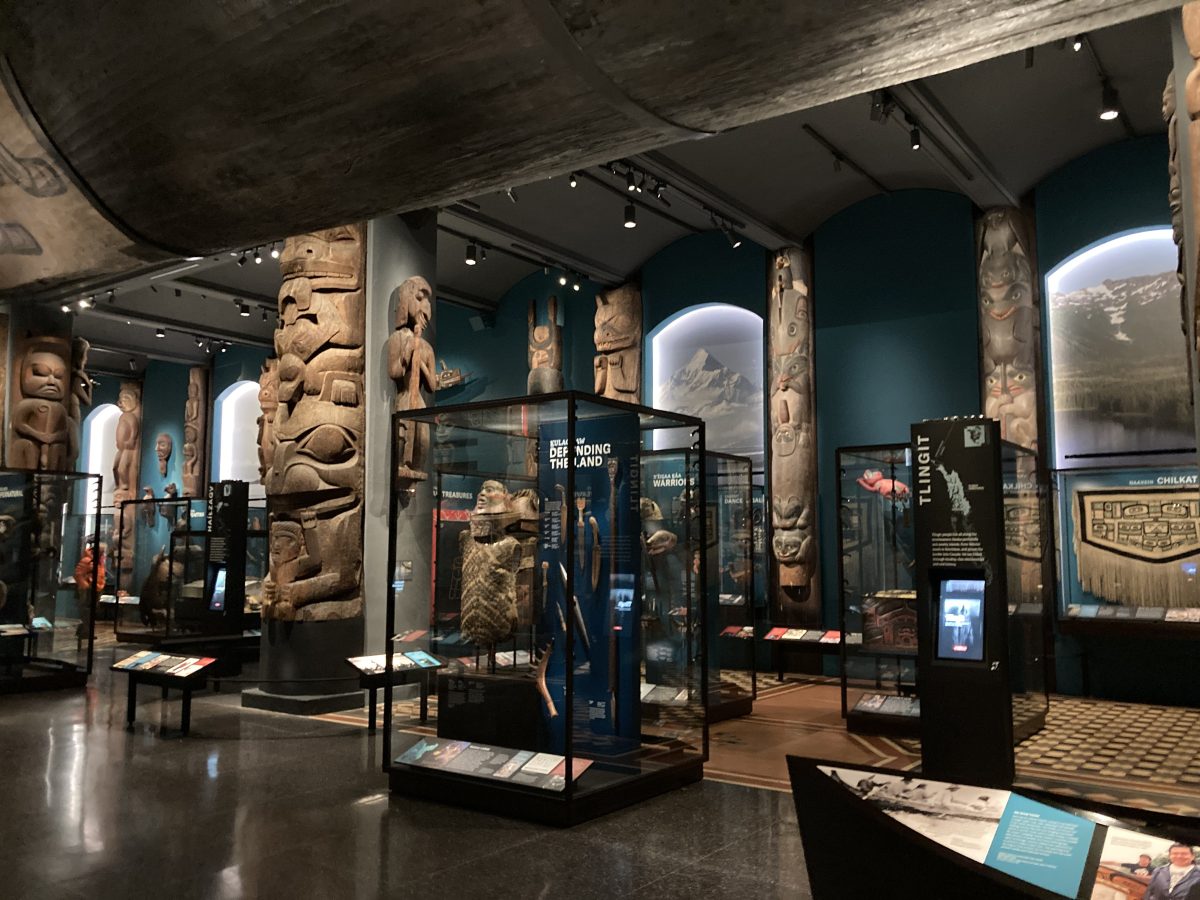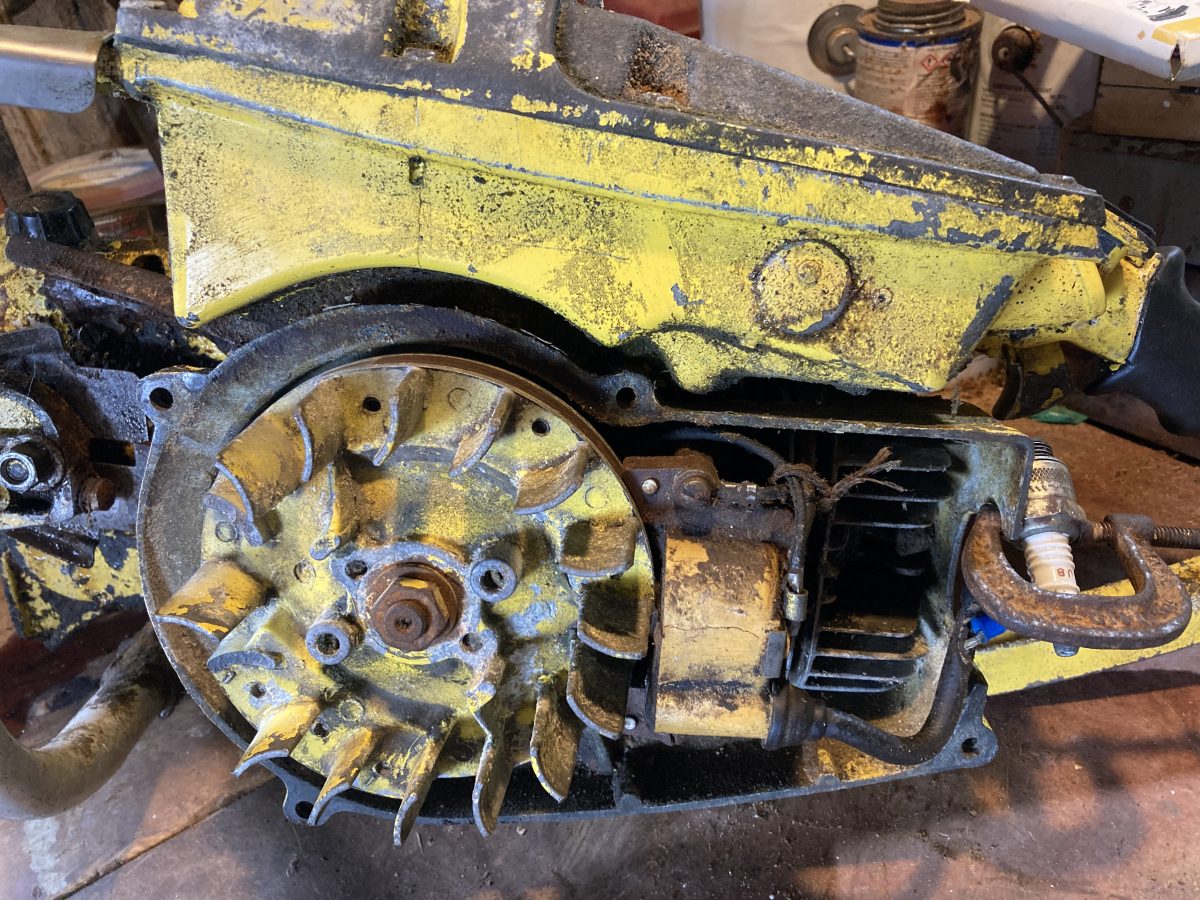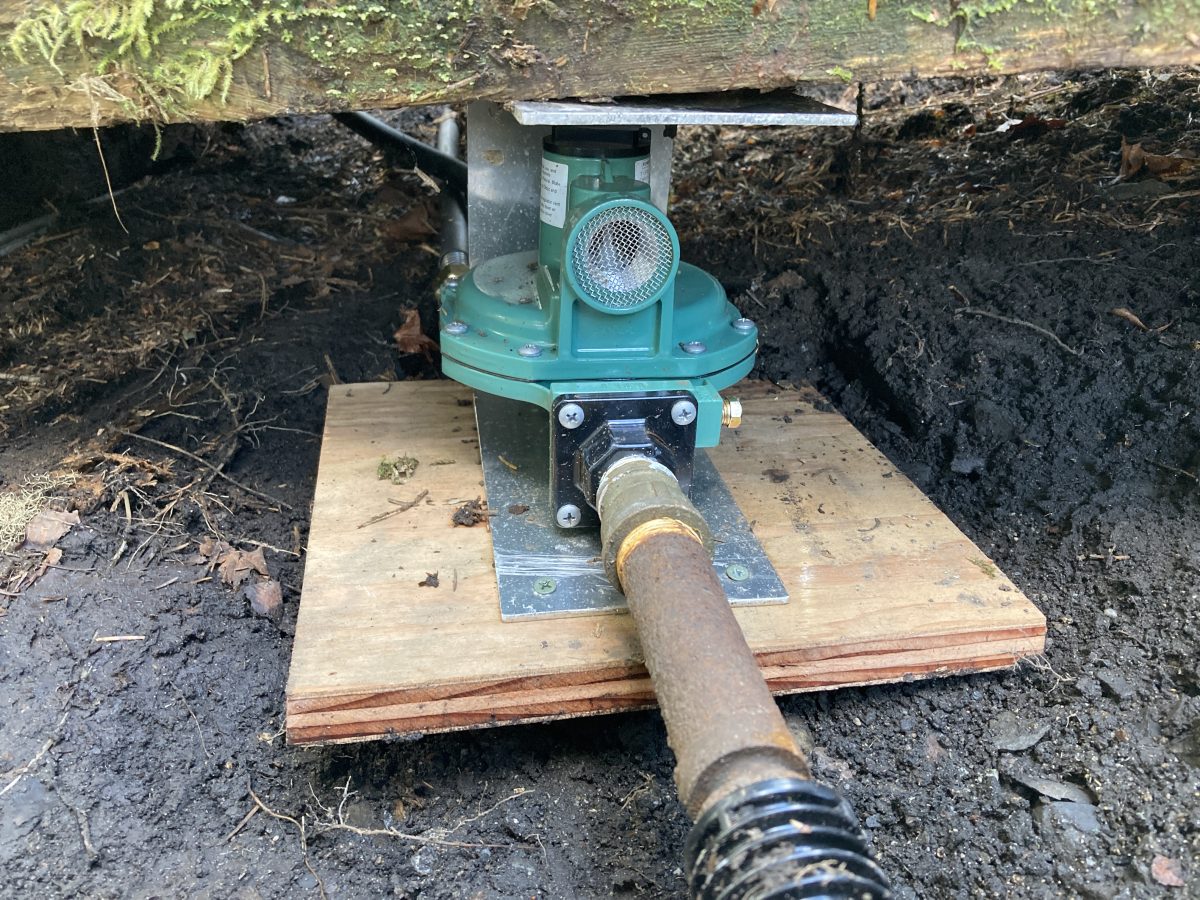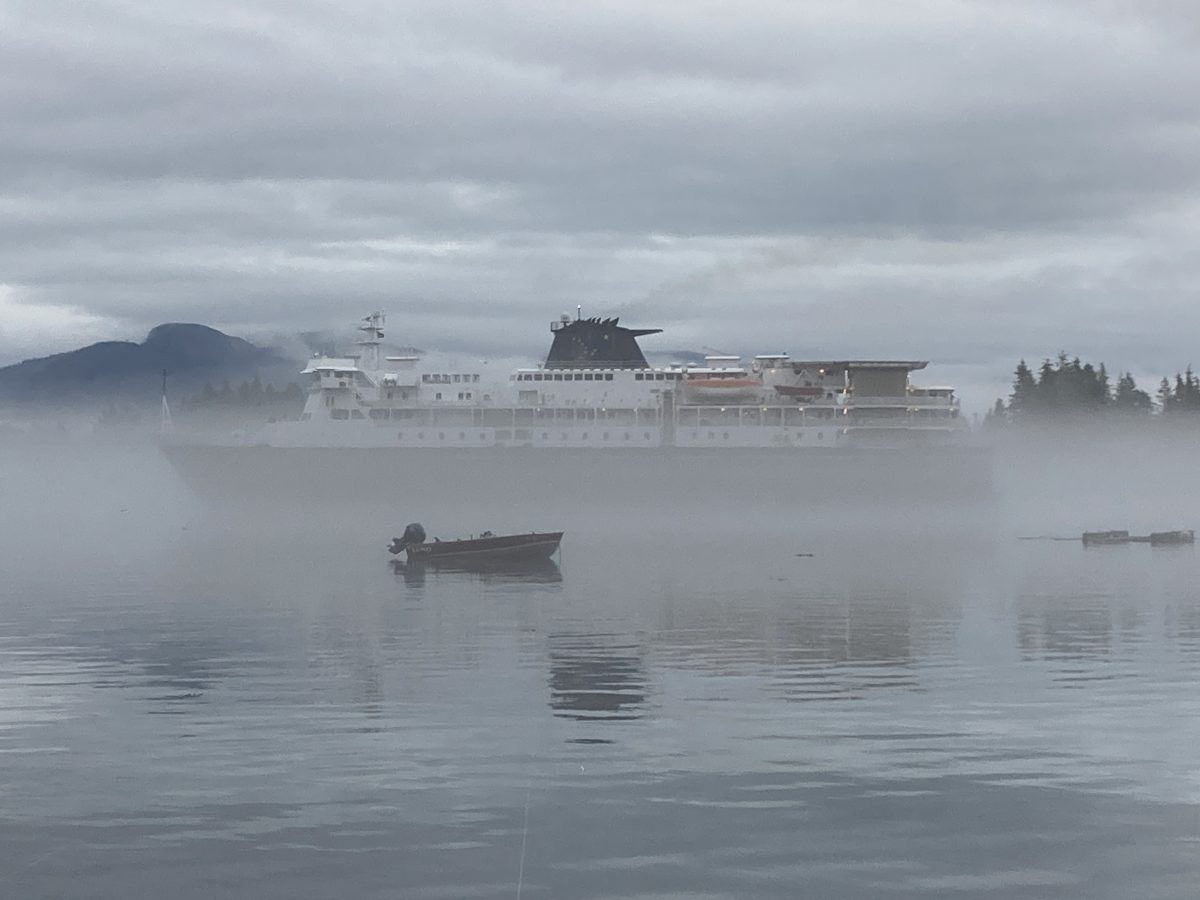Having fixed my propane leak by replacing 60′ of piping, rebuilding a chainsaw, trading out all the pulleys on my outhaul, hauling wood, practicing piano and baking pies and otherwise slacking off, I decided to be productive for once and build a bentwood box. You’ve seen them–the Tlingit and other coastal tribes have been building these boxes for Millenia by steaming red cedar and bending the corners into a box. I decided to give it a try. Here’s what I learned: 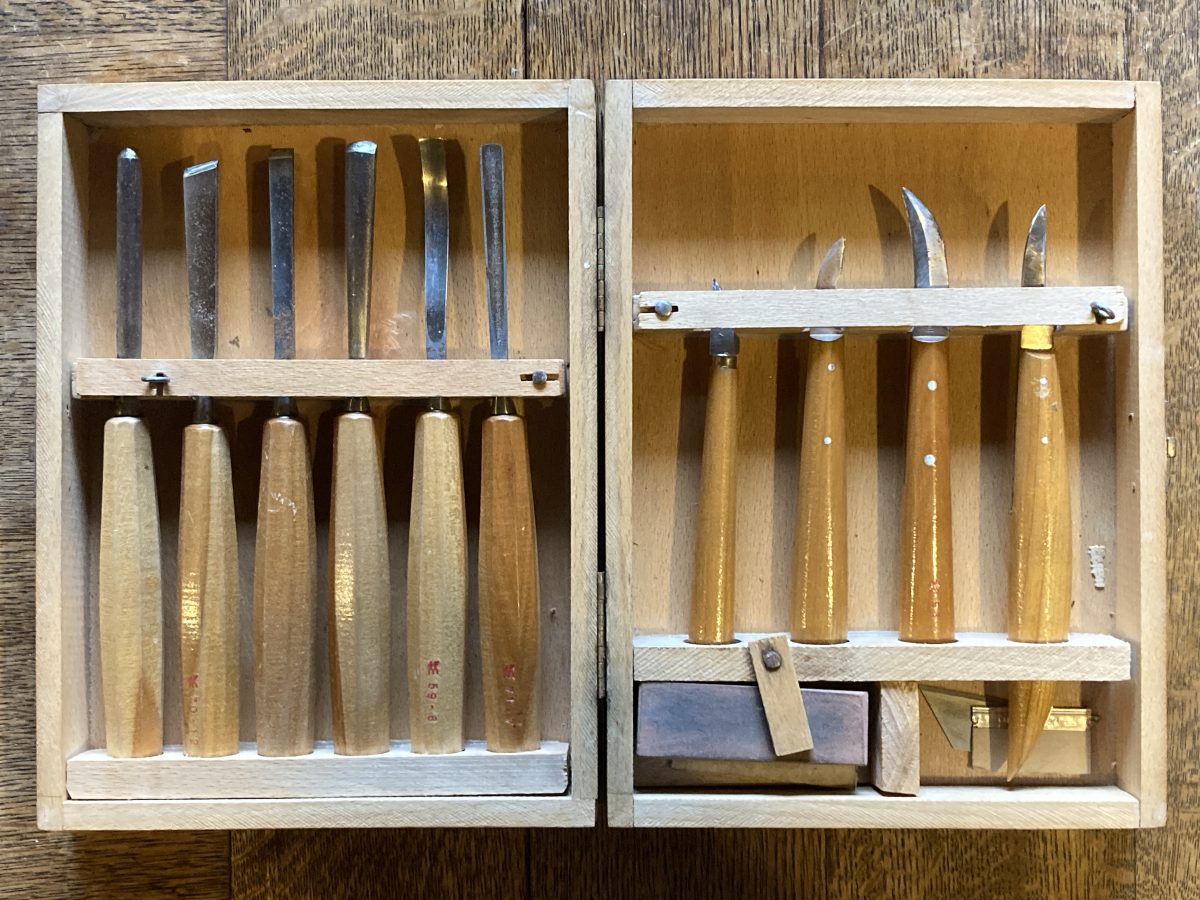
Rule #1: sharp tools. These are my 50 year old Henckle carving knives I bought when I was a park ranger wiling away hours in the shoulder seasons at Jenny Lake Ranger Station. I carved a banjo neck (I’m left handed) and many other useless trinkets. I had an unlimited supply of redwood (better than red cedar) since the parks signs were made out of this wood.
Rule #2: Don’t try to bend the cedar unless you know how. This box is made from 20 year old red cedar scrap (and a yellow cedar top) that I found laying around which I carefully glued and nailed together. So this wood was too dried out to bend and proved to be very difficult to carve. My next box will be bent with fine grain air-dried red-cedar. Here is a good video on how it’s done:
https://www.youtube.com/watch?v=_EFFtF9m_mQ in the native Tlinkit language even.
I found several simple patterns on the internet–two Chilkat and two Tlingit so used these for the four sides. They are paired up so you can see both images adjacent to each other. Two are carved (Tlingit) and the two Haida designs are simply painted–they are a bit modern, also.
The essence of this art is the “Formline” design as described in Bill Holms timeless book “Northwest Coast Indian Art.” I won’t go into detail except to say it’s the space between these elements that has to flow. I took a course from Bill back in the mid 1960s and never forget what he taught me. He died just 4 years ago at age 95. He was curator of the Burke Museum in Seattle–one of the NW greats.
These internet screen grabs need to be corrected for parallax first–in Photoshop Elements by Image, Transform. Skew and then stretch as needed. The circle is problematic as it’s difficult to achieve a perfect circle. The rectangular designs can be stretched in either axis by uncoupling the proportions button. My box was 11.75″ wide and 10.5″ high–slightly wider than tall–so I simply created an even border and printed this out on paper to fit these dimensions.
I’ve only black inks living on an island in Alaska so simply printed out and aligned to the box and then took a sharp pencil and traced everything onto the “soft” cedar. A sharp knife also suffices–but cuts the patterns up. A pencil is best methinks–as you will need to look behind this pattern occasionally to see if all the information is transferred. I used both but got distracted:
Here is my first pass and rough layout. What’s the white ring at the bottom? A goof, that’s what.
Rule number 3: Don’t get distracted. I laid out the larger circle–after printing out this pattern on my computer to see if it would fit my box and then got distracted, returned, and began carving……opps! Fortunately, this section was painted when I rotated the pattern 90 degrees. Recall that this box was 11.75″ X 10.5″ so not a perfect square. Next one I’ll standardize.
Rule #4: Get good magnification. I used my old dental loupes–on top of the box here–made by Almore in Portland and costing about $135 back in the day. I wore these for 40 years in my dentistry and probably took them to bed, not realizing they were still on my head. With my 78 year old eyes, these are essential for the fine work. Here’s a link if you want a pair. After checking Ebay–you can get a modern version for a fraction of the cost of these Almores which command $250 as antiques!
Rule #5: Wood selection–I used 20 year old scrap–a huge mistake although I persevered. Young wood is softer. Here is a closeup of my difficult sections. Note the grain gets wider (I paired up the tight grain in the center) as you carve towards the top and bottom. Very difficult to control the knife over these corrugations.
Painting is actually easier with carved borders This is the first coat of tempera paint–I’ve never used these paints and initially thought of simple enamel but tempera is perfect, water soluble, but difficult to sand out darker colors as the pigments are so fine. And it’s cheap–a $2 squeeze bottle will paint 100 of these projects. Lighter colors need several coats as will this red. There are lots of little blemished parts which under magnification, can be easily corrected. Don’t start carving right after morning coffee.
Also, carving in circles–which is 99% of NW Coast art–is problematical on a linear grained wood. The top shown below is very tight grain Alaska Yellow Cedar–old growth and is much easier to carve although it’s slightly harder. A circular non-painted carving will be done here sometime in the future.
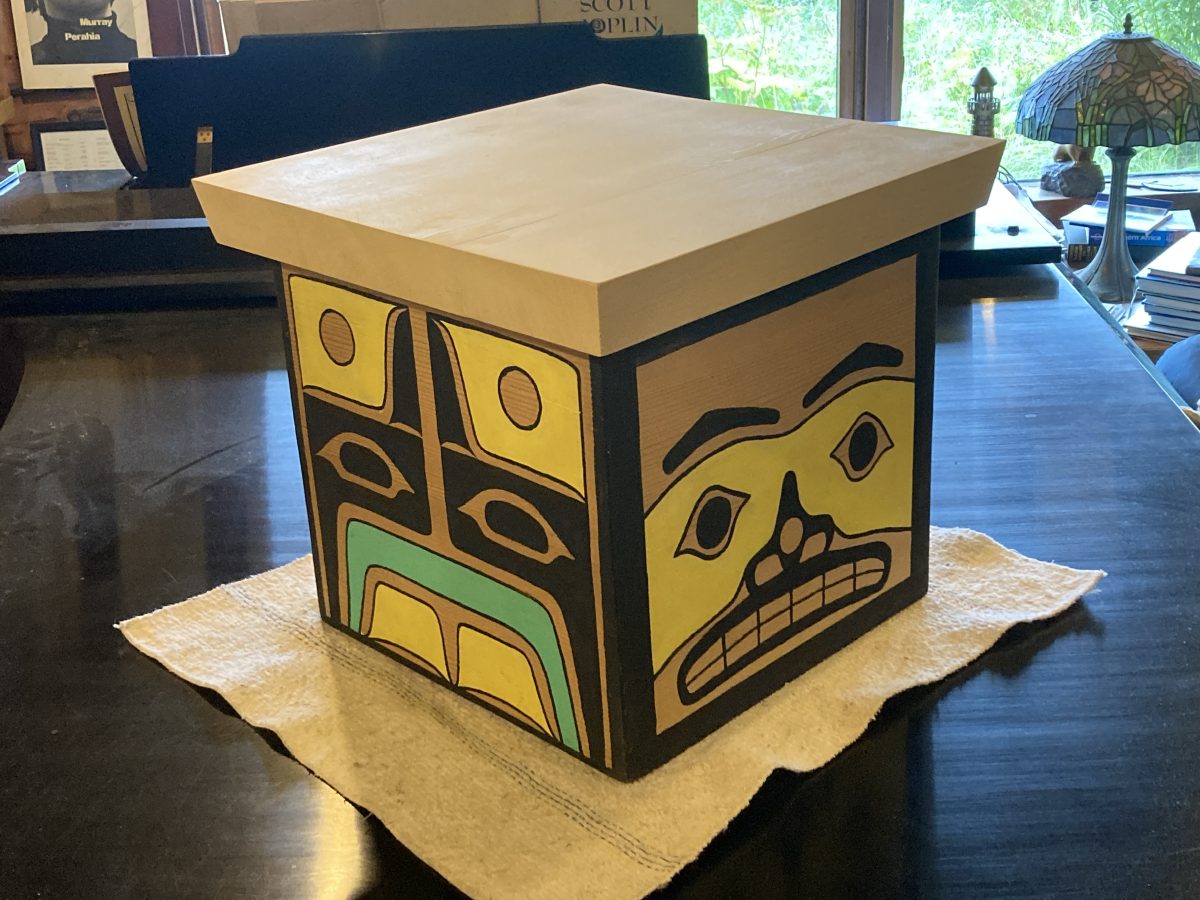 The completed box with two Chilkat painted panels……
The completed box with two Chilkat painted panels……
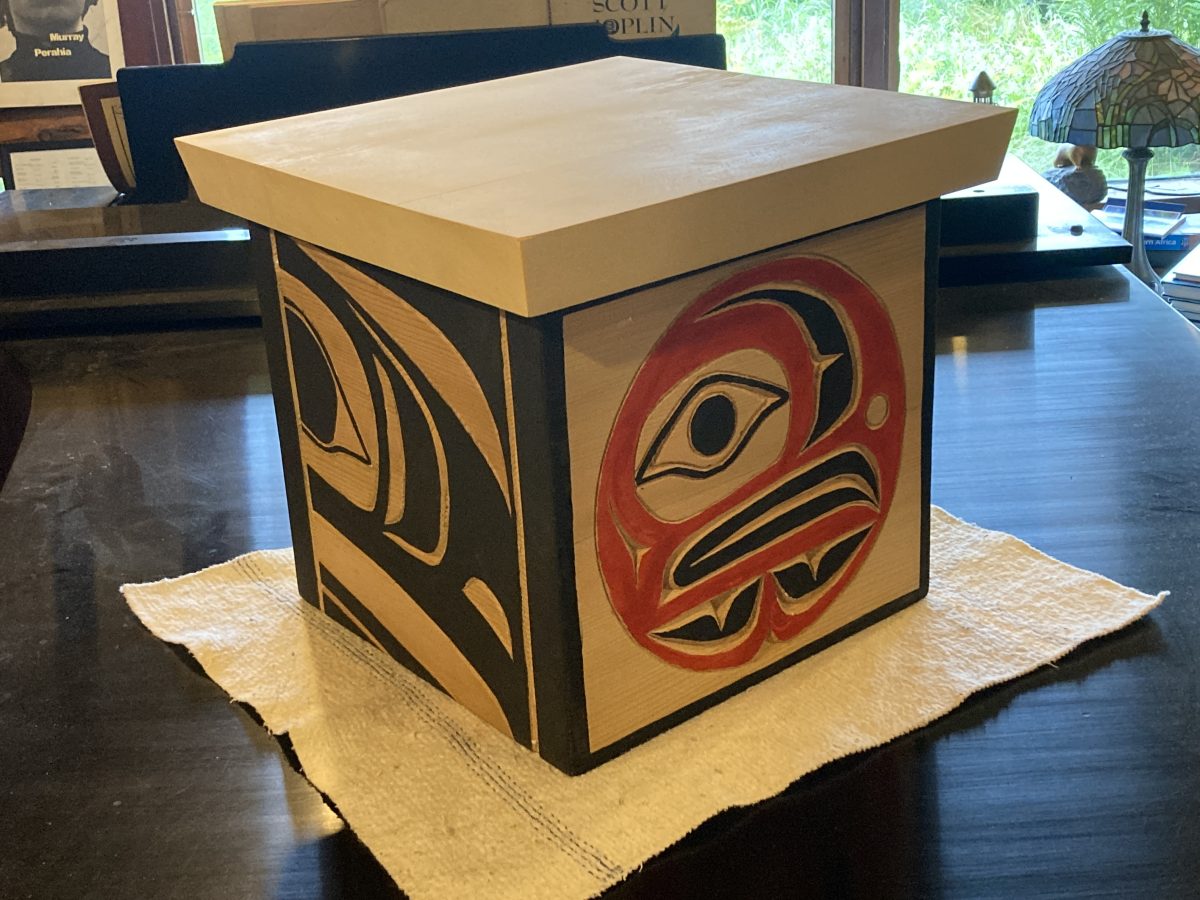 …..and the two Tlingit panels–both carved and painted.
…..and the two Tlingit panels–both carved and painted.
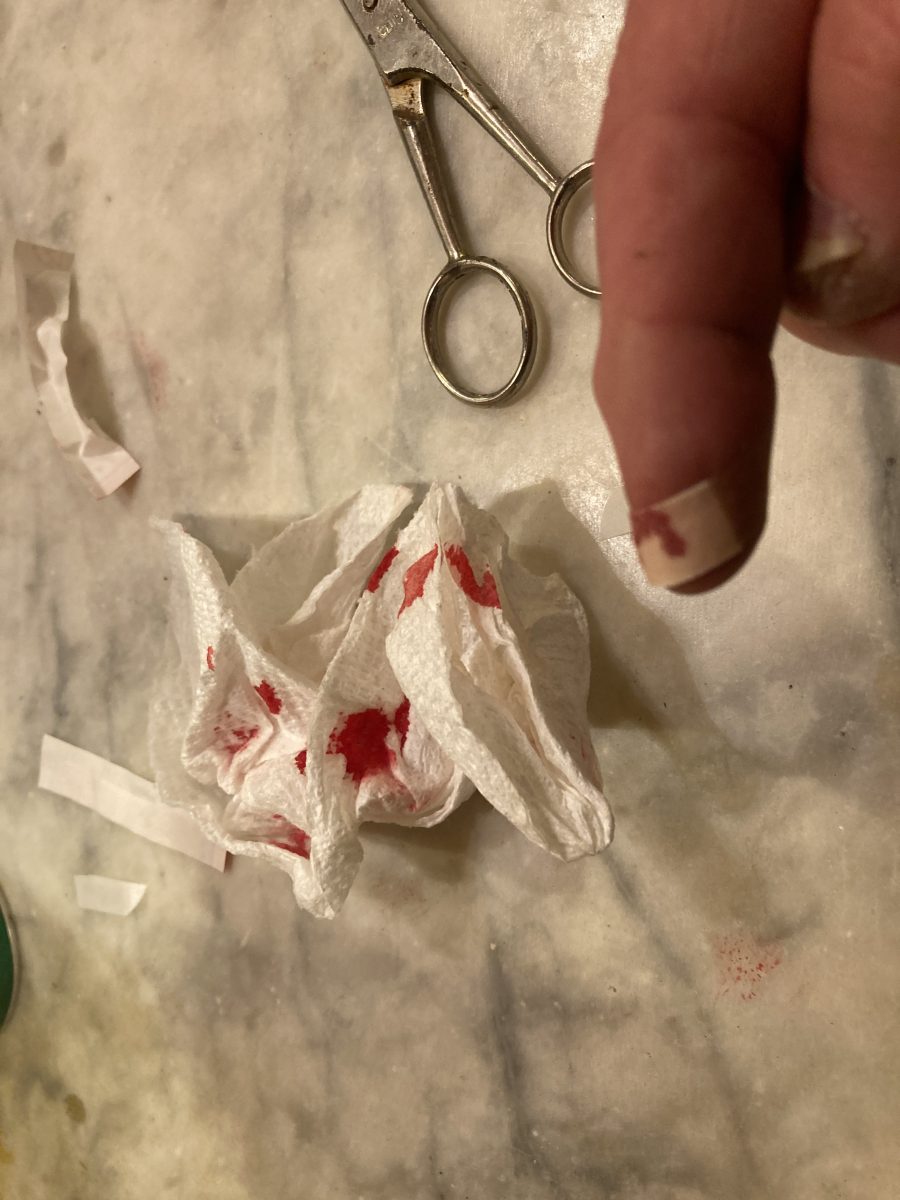 Dull knives are dangerous. Precious AB Negative blood-type here. Actually this injury incurred while slicing a lime with newly sharpened knives (I got carried away by sharpening everything in the house; except my brain, that is), so this is a lesson. At least there is no scurvy at the South Kupreanof Yacht Club. A ceremonial gin & tonic heals my wounds and my pride, makes me forget my goof and…..numbs the pain–mother-nature’s perfect anesthetic. I’m now looking at a 32′ totem with a little different perspective. This project took about a week to complete–fun!
Dull knives are dangerous. Precious AB Negative blood-type here. Actually this injury incurred while slicing a lime with newly sharpened knives (I got carried away by sharpening everything in the house; except my brain, that is), so this is a lesson. At least there is no scurvy at the South Kupreanof Yacht Club. A ceremonial gin & tonic heals my wounds and my pride, makes me forget my goof and…..numbs the pain–mother-nature’s perfect anesthetic. I’m now looking at a 32′ totem with a little different perspective. This project took about a week to complete–fun!
Here’s a bentwood box in the Margaret Mead wing of the Museum of Natural History in New York City–now plundered by DEI. Last winter they took down the bronze statue of Teddy Roosevelt with a Native Amerian and an African-American. Here is an article in this morning’s paper (CNN) on this travesty. These exhibits are gone:
The box is a vessel for this folded Chilkat blanket–exquisite craftsmanship and art.
A Chilkat Blanket on full display. These are woven from mountain goat fur gathered from bushes that snag it. It takes years to make one. There is a Juneau trading company that imports woolen rugs in this pattern–woven in Nepal of all places. See the Asian nuance?
This “Chilkat” adorns the front of my Tulikivi heater here at the Yacht Club. Back to the Natural History Museum…..
All these exhibits are now gone…..to where? I should think the NW Coastal peoples would be proud….no, ecstatic….. that their culture could be appreciated by all Americans. If these items were stolen, then fine–otherwise, keep them on display. I would rather hold public “confessions” if that’s what it takes. I compare this lunacy to the Cultural Revolution in China or Pol Pot’s regime. What’s next? Subject of another blog, perhaps.
OK–on to another project…… Meanwhile, I’m trying to get this 1950 McCullough chainsaw–model 640–running but the coil won’t throw a spark. It attaches to a custom built log puller (see this post) which will assist me in dragging out my downed spruce.
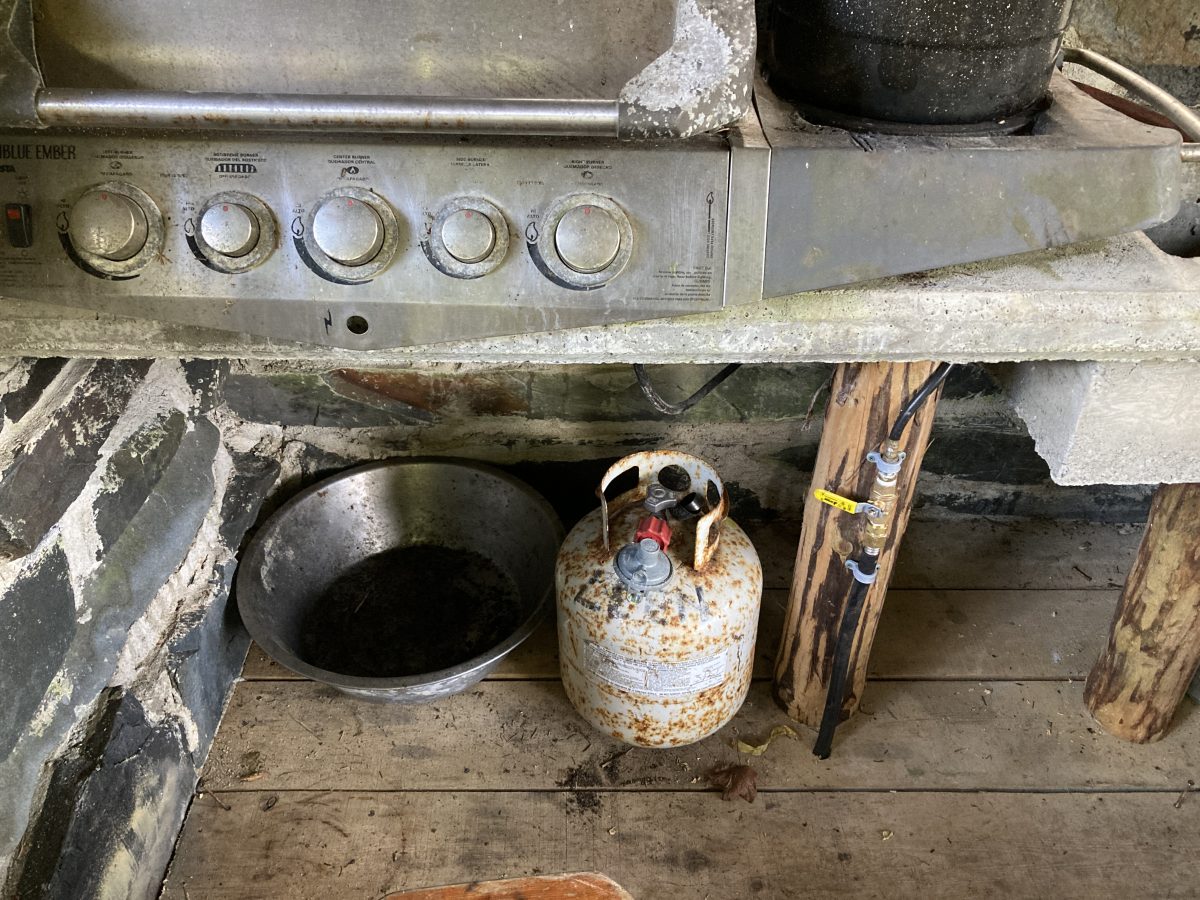 The propane project….. For two years I’ve had a pretty good leak, but blowing through $900 worth of this stuff in six weeks was the final straw–and since it was under my house, quite dangerous. I had a second leak in the hoses made with off-shore fittings that all cracked. One bonus is I added a spur line to my outdoor kitchen so I don’t have to haul these tanks any more–note the new line. Skookum! This outdoor kitchen is the best room in the house–designed after a CCC shelter in Albert Good’s “Parks and Recreation Structures.” What else is new?
The propane project….. For two years I’ve had a pretty good leak, but blowing through $900 worth of this stuff in six weeks was the final straw–and since it was under my house, quite dangerous. I had a second leak in the hoses made with off-shore fittings that all cracked. One bonus is I added a spur line to my outdoor kitchen so I don’t have to haul these tanks any more–note the new line. Skookum! This outdoor kitchen is the best room in the house–designed after a CCC shelter in Albert Good’s “Parks and Recreation Structures.” What else is new?
Rule #1 with propane–it’s heavier than air and sinks to low places. Any wind will blow it off, but it will (like mercury vapor in dentistry) land in the low places and accumulate. I had a friend who filled the bilge of her barge (her home) with a propane leak and when she lit off the stove in the morning, she blew 80 in the air. You could hear this explosion in Nanaimo (she was anchored in Birds Eye Cove, 30 miles away). I replace virtually everything uphill from the midpoint in my system–which we had capped off and tested as safe. I bought a propane sniffer which really works–don’t leave home without one. The new regulator with it’s own little rain protection and all new piping runs under my boardwalk from the house,125′ to the tank manifold in my waterfront net-shed and dock.
The view from my dock. This blog started out with bentwood boxes….so I’ll end with fog. I’m getting ready to pack up and head south to Seattle, Cody, Jackson Hole, and finally Tucson–in two weeks. It’s been raining all summer (6 sunny days so far). At least my hydro is producing power when the solar panels can’t. One caution to living on the narrows is fog. I bought this place from a fellow who went missing–presumably drowned as they found his empty boat 3 miles distant on another island. Many larger marine vessels run day or night, rain or shine and clear or foggy up and down the Wrangell Narrows–a duck-dodge of 26 miles and about 75 buoy markers through this two dimensional labyrinth. If you read about this navigation challenge in the many maritime guide-books, you would never visit Alaska. My address is Buoy 54–so wave if you pass by. Ground fog is deceptive (as I once learned trying to land at the South Pole). I’ve seen only the radar masts of tugs pulling barges protrude above a thick blanket–unlike here where you can see most of the ferry. Lurking behind and below the fog is thousands of tons of barge. They stop for no one. Two weeks ago, a fishing boat ran over a charter sport fishing boat in the tightest neck of the Narrows drowning one occupant. Life off the grid……stay tuned!

